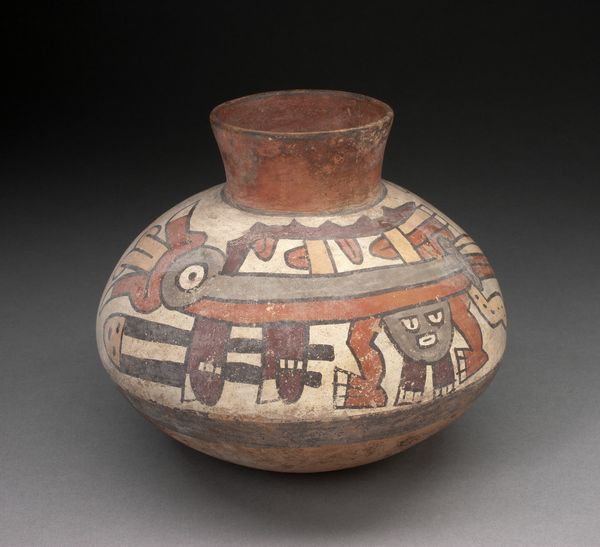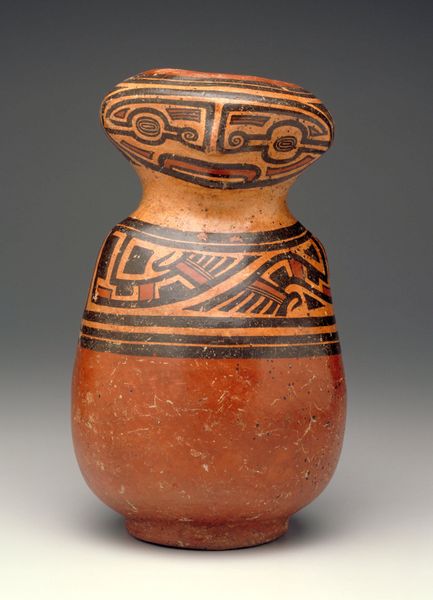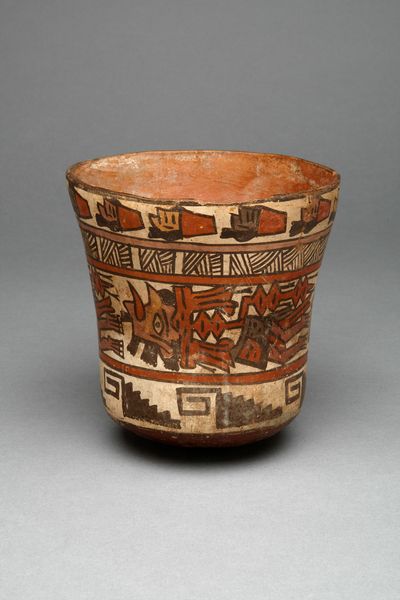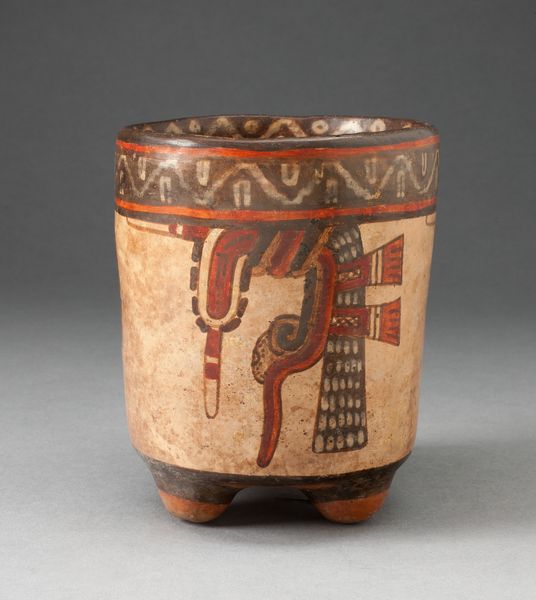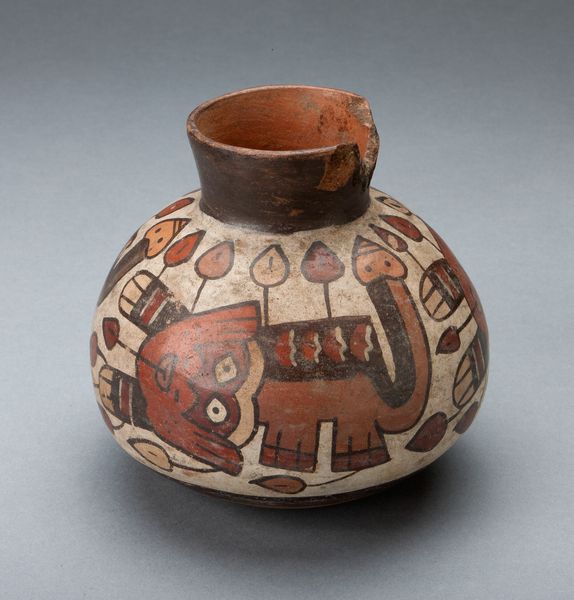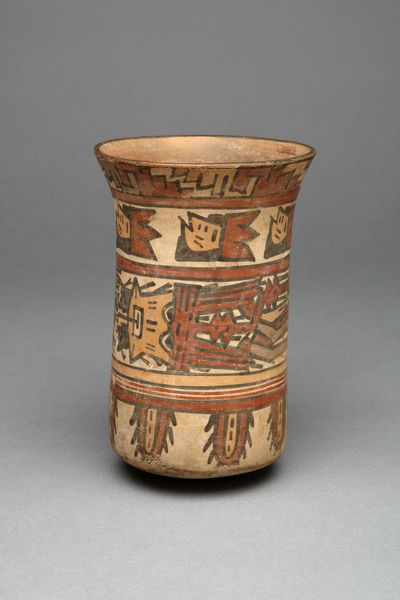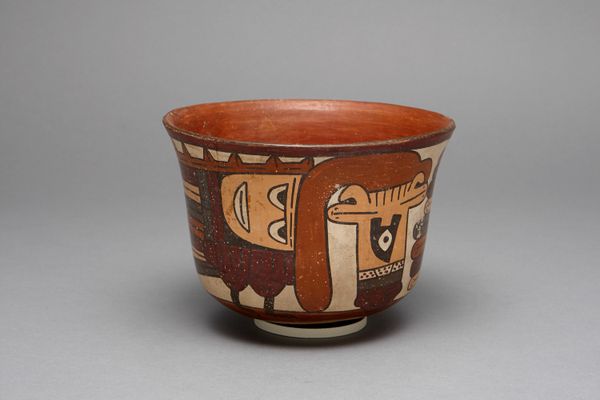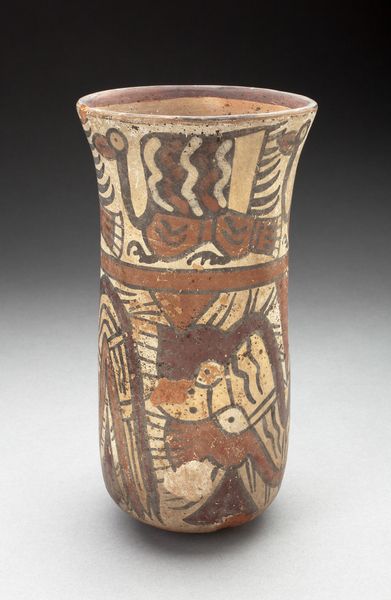
ceramic, earthenware
#
pottery
#
ceramic
#
figuration
#
earthenware
#
ceramic
#
indigenous-americas
Dimensions: 17.9 × 14.3 cm (7 1/16 × 5 5/8 in.)
Copyright: Public Domain
Curator: Welcome. Let's explore this intriguing earthenware jar attributed to the Nazca culture, crafted sometime between 180 and 500 CE. It’s currently held in the collection of The Art Institute of Chicago. Editor: It has a stark, almost brutal beauty. The colors are muted—earthy tones. What immediately strikes me are the… heads. Those disembodied heads staring back at the viewer. Curator: Yes, the jar is known as "Jar Depicting Bands of Trophy Heads and Seeds," which gives us insight into its imagery and possible ritualistic significance. The upper register features those angular geometric seed designs, while the main register displays a procession of stylized human heads. Editor: It's impossible to ignore the imagery of war here. The presentation of these heads feels significant—is this display an indication of victory, a warning, or something more symbolic? Curator: Likely all of the above. Within Nazca society, taking trophy heads was not merely about conquest. It's believed to be connected to agricultural fertility. There is a theory they acted as intermediaries with the supernatural world, and securing these heads could ensure successful harvests. Editor: It's interesting how violent acts become so intertwined with societal rituals to bolster sustainability, which challenges Western understandings of warfare as external acts, and demonstrates how closely interwoven it could be into core community structures. Curator: Precisely. Nazca ceramics played an important role within these community practices. Serving vessels like these would have likely been involved in feasts where political alliances were reinforced or ritual events centered on reinforcing these links between community life, death, and agriculture occurred. This earthenware example would be connected to power, sustenance, and ancestral memory. Editor: Thinking about indigenous artistry in the Americas really forces one to grapple with themes of identity, power dynamics, and resilience, particularly when thinking about how museums curate this artistry. What power structures dictate display? How does visibility support and challenge contemporary indigenous artists today? Curator: Those are necessary questions to ask when viewing historical objects like this Nazca jar. It is important to recognize the museum's role in stewarding, interpreting, and exhibiting these objects in order to make them more accessible. But that visibility can only begin the dialogue and never supplant more meaningful allyship with those contemporary groups. Editor: Thank you. Viewing art, even pieces so removed in time like this jar, still pushes us to understand more about today’s cultural politics and practices. Curator: Indeed. Through interrogating these artistic practices, we can engage a broader discourse with past lifeways.
Comments
No comments
Be the first to comment and join the conversation on the ultimate creative platform.
